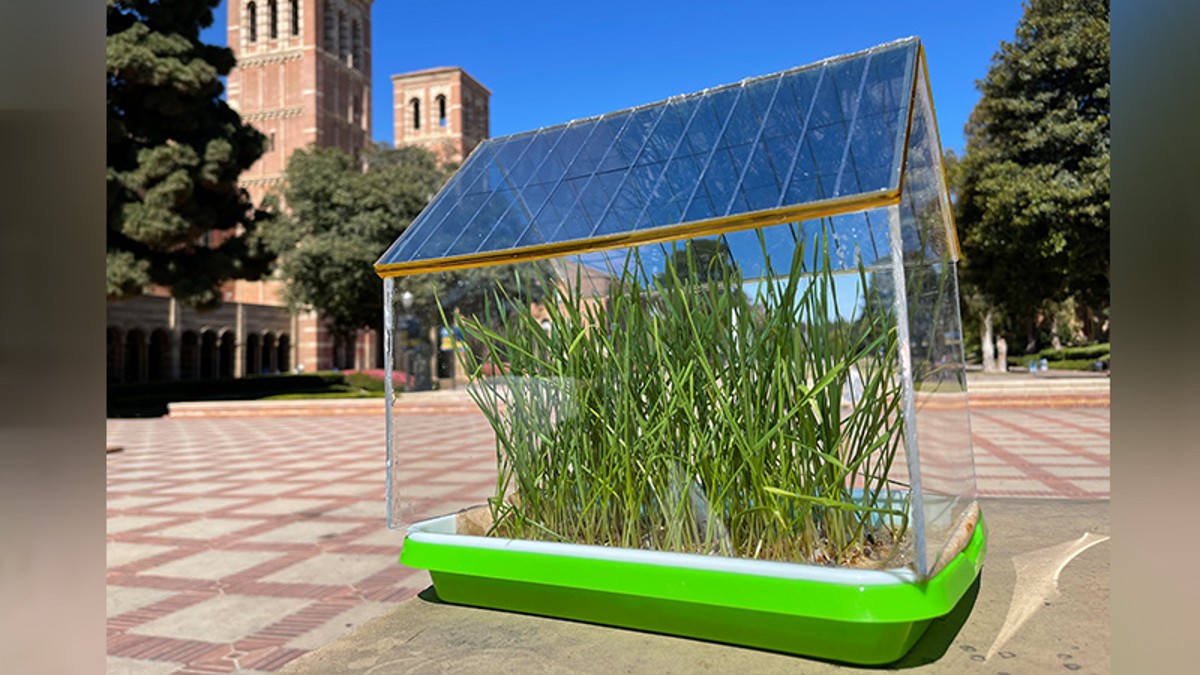
Maybe it is time that we really started to think about all this. Plants absorb sunlight over specific spectra. Diverting what is not used is possibly useful and may be even be a source of energy. Now if that energy can also be used to support growth, it can even get bettrer.
what i am describing is a huge research program taking even generations. And why not?
The real eye opener is that our work has just bergun on all this.
Scientists put a semi-transparent solar roof on a greenhouse, and unexpected things happened
Michelle Lewis | Mar 14 2023 - 4:00 am PT
In an agrivoltaic study, UCLA engineers put a semi-transparent solar roof on a greenhouse, and some unexpected things happened with both the roof and the plants.
The researchers at UCLA Samueli School of Engineering designed semi-transparent organic solar panels that can absorb energy from sunlight without blocking the light that the plants need.
The study, “Achieving sustainability of greenhouses by integrating stable semi-transparent organic photovoltaics,” was published last week in Nature Sustainability. The research team’s organic solar cells rely on carbon-based materials, instead of inorganic substances used in conventional solar devices.
The solar part of the study
The team incorporated a layer of L-glutathione, a tripeptide molecule made up of three amino acids: glutamine, cysteine, and glycine. It’s an antioxidant found naturally in the human body, and it’s sold over the counter as a dietary supplement to support overall health and well-being.
The team found that adding L-glutathione extended the solar cells’ lifetime, improved their efficiency, and still allowed sunlight to reach plants in the greenhouse prototype, which was about the size of a small dollhouse.
Lead scientist Yang Yang explained:
Organic materials are uniquely suitable for agrivoltaics because of their light-absorption selectivity. The main drawback that has prevented their widespread use up to now is their lack of stability.
Organic solar cells tend to degrade more quickly than inorganic solar cells because sunlight causes them to oxidize and thus lose electrons. The researchers found that the additional L-glutathione layer stopped the other materials in the solar cell from oxidizing. That in turn resulted in the organic cells maintaining more than 80% efficiency after 1,000 hours of continuous use — as opposed to less than 20% without the added layer, according to the UCLA Samueli newsroom.
The plant part of the study
Researchers tracked the growth of such crops as wheat, mung beans, and broccoli in two different experiments. In one, they used a transparent glass roof with segments of inorganic solar cells on the greenhouse, and in another, the roof was made entirely from semi-transparent organic solar cells.
The crops in the greenhouse with the organic solar roof grew more than the crops in the regular greenhouse. The scientists believe that happened because the L-glutathione layer blocked both ultraviolet rays that can inhibit plant growth and infrared rays that can cause greenhouses to overheat, thus causing the plants to need more water.
Lead author Yepin Zhao said:
We didn’t expect the organic solar cells to outperform a conventional glass-roof greenhouse.
But we repeated the experiments multiple times with the same results and after further research and analysis, we discovered that plants don’t need as much sunlight to grow as we’d originally thought. In fact, too much sun exposure can do more harm than good, especially in climates such as California’s, where sunlight is more abundant.
Would be interesting to see combined with other features like LED grow lights powered by battery packs (charged by the PV) to extend light to optimum, increased CO2 to the optimum, optimal hydroponics or drip, etc. The whole system might be net more efficient than versions that don’t make full use of natural sunlight.View all comments
The research team has now established a startup at UCLA that aims to scale up production of the organic solar cells for industrial use, and they’re hoping to commercialize greenhouses with organic solar cell roofs in the future.
No comments:
Post a Comment